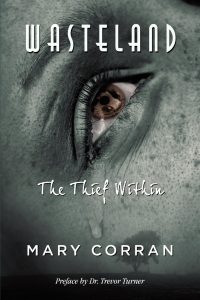Sarah Ash's Blog, page 12
November 7, 2016
Plotting and Winnowing Your Way into a Story: T. Frohock discusses research, plotting and writing
One day, out of the clear blue and because I had no other brilliant ideas, I wrote a blog post about Simon Magus. I had no real idea of where I wanted to go with the post, just that it was going to be about Simon Magus, who he was, and whether or not he might have authored a grimoire. It should have been easy-peasy, but it wasn’t, because I wound up writing my way into the post rather than beginning with a clear idea of how I wanted to proceed.
The more I delved into the background of Simon Magus, the more I realized that I was dealing with a bigger picture than I first envisioned, so that in the end, the post was less about grimoires than it was about the slander of Simon Magus’s character over the centuries. The post had five rewrites, which was astounding, because I don’t put as much work into blog posts as I do my stories. My problem with the Simon Magus post was that it was like a puzzle that I knew I could solve, but it felt like forever before all of the facts fell into place. It was a winnowing process, and sometimes things got real messy before it was over.
Los Nefilim was like that in the beginning. The story in its original form was a huge epic fantasy set in 1348. The protagonist of that story was Guillermo, but by the end of the novel, the focus had shifted to Diago. As I went through the editing/winnowing/messy part of the process, I realized that Diago was really the protagonist, and all of the other characters revolved around him. Yet they were all so interconnected, one man’s story didn’t have the same emotional impact as their shared story.
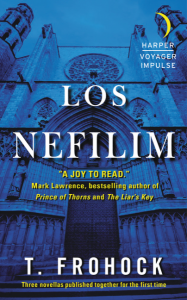
In that respect, Los Nefilim followed the trajectory of the Simon Magus post by beginning with who, what, where, and evolved into the question of: how did this happen? How did three friends, who loved one another, turn into enemies and what could possibly bring them back together again? Just as the Simon Magus post was a puzzle, so was the relationship between Guillermo, Diago, and Miquel.
I wrote my way into that story, and now, looking back on it, I can see where it went wrong. With that experience behind me, I have, of late, become a big fan of plotting. Sooner or later, if anyone writes long enough, we all find the style that works best for us and our individual creative bursts.
For me, a strong synopsis keeps me on track. This isn’t to say that I am right and anyone that says different is wrong. Plotting simply works for me and keeps me from having to write my way into a story, which can be a long arduous process if I don’t know where I’m going. A synopsis saves time, because I work my way through the big questions before I ever write the first word. With the big picture issues solved, I can focus on the minutiae that my readers enjoy, and the number of rewrites are more like story tweaks than actual rewrites.
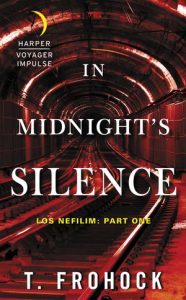
Things can still get messy, but when they do, I return to my synopsis and check my facts. With the second incarnation of Los Nefilim in the novellas In Midnight’s Silence, Without Light or Guide, and The Second Death), I used a synopsis for each novella. The only novella that bucked me was Without Light or Guide, and that wasn’t because of the synopsis, but due to a characterization issue. I attempted to force Guillermo to act out of character and the story fell flat. Luckily, my editor picked up on the issue, and after a rewrite, I managed to fix the story. Even so, that novella only required three passes before it was done.

Now that I’m freelancing again, I’ve written synopses for two different novels, a novella, and a short story. Then, after I’ve spent a little time getting to know the characters and their voices, I can rock my way through the story. The technique isn’t always perfect, but the messiness at the end is greatly reduced. I liken it all to having a good road map before starting a trip whereas other folks like to meander and see the sights. Both ways are perfectly valid, depending on the author’s preferences and skill-set.
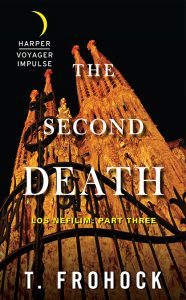
The real trick comes in winnowing the story out of the first draft. Once that is accomplished, the number of editing passes is entirely up to the author. I go through the manuscript until I can’t find anything else I want to change. Sometimes that is one pass or five, depending on the story and any deadlines.
You have to find your own pace, and you do that by writing and failing and writing some more.
T. Frohock has turned a love of dark fantasy and horror into tales of deliciously creepy fiction. She lives in North Carolina, where she has long been accused of telling stories, which is a southern colloquialism for lying.
She is the author of numerous short stories, the novel, Miserere: An Autumn Tale, and her newest series, Los Nefilim, is from Harper Voyager Impulse.
Please Feel Free to Share:







November 5, 2016
T. Frohock on the Guest Blog on Monday
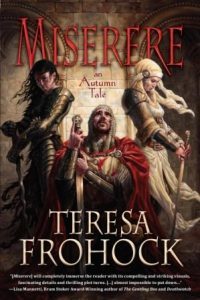 It’s the month of NaNoWriMo and T. Frohock will be appearing on the Guest Blog on Monday with some pertinent and helpful reflections on the art of plotting! A must-read if you’re writing…or just interested to learn more from the author of Miserere and Los Nefilim.
It’s the month of NaNoWriMo and T. Frohock will be appearing on the Guest Blog on Monday with some pertinent and helpful reflections on the art of plotting! A must-read if you’re writing…or just interested to learn more from the author of Miserere and Los Nefilim.
Please Feel Free to Share:







November 3, 2016
T. Frohock on the Guest Blog… very soon!
 I’m so thrilled to be hosting T. Frohock on the Guest Blog this month; I read ‘Los Nefilim’ this summer and absolutely loved it! I strongly urge anyone who is interested in angels, demons, music, alternate history, and 1930s Spain, to rush out and get a copy. More news about her upcoming post very soon!
I’m so thrilled to be hosting T. Frohock on the Guest Blog this month; I read ‘Los Nefilim’ this summer and absolutely loved it! I strongly urge anyone who is interested in angels, demons, music, alternate history, and 1930s Spain, to rush out and get a copy. More news about her upcoming post very soon!
Please Feel Free to Share:







November 2, 2016
Another Fantastic BristolCon
BristolCon 2016
Another really enjoyable BristolCon (and a big Thank You to everyone who made that possible, including the hotel staff.) So great to meet so many people gathered together because they love SFF (and Horror) and everything to do with those genres!
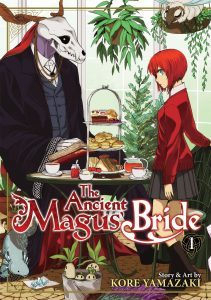
So many people I loved meeting, talking to, catching up with (forgive me for not naming names)… However, I want to thank Dan Pawley and Andy Bigwood without whom I couldn’t have given my talk on Kore Yamazaki in the Art Room. It’s been a pleasure that the BristolCon committee members have allowed me to enthuse on various anime and manga fantasy and science fictional topics, enabling me to meet others who are fans or just intrigued by the whole phenomenon. This year I chose to talk about English folklore as reinterpreted by Japanese mangaka, basing my presentation on the ongoing manga ‘The Ancient Magus’ Bride’ by Kore Yamazaki (which now has its related anime, viewable on Crunchyroll.)
The Ancient Magus’ Bride #1 by Kore Yamazaki Teen Seven Seas (My review originally appeared on Anime UK News)
Sixteen-year-old orphan Chise Hatori is sold at a mysterious auction – for a cool five million pounds – to a British mage who plans to train her as his apprentice. Elias Ainsworth is very much the gentleman, smartly attired, and if weren’t for the fact that, instead of a human head he has a horned animal (dog?) skull, outwardly quite normal. But as he whisks Chise away to his home in the countryside ‘west of London, on the shores of England’, he confides that he also intends to make her his bride. For she is a rare creature, a Sleigh Beggy, one who, rather like a queen bee, can summon and bind all manner of fae beings. “You will be a magnificent mage one day,” he tells her. But in the meantime, Chise is just happy to have a room of her own with a real bed.
A trip to London with Elias means that he puts on his human face so as not to scare anyone. He takes Chise to meet Artificer Angelica Purley (Madam Gem Bee) who tells her about the differences between magic and alchemy, and then shows her how to start to use her gift – with rather unexpected results. Subsequent trips – three missions given to them by Simon, the pastor of the local church (obviously the church can’t be seen to be openly dealing in magic) – see Chise and Elias visiting a dragon aerie in Iceland (yes, dragons till exist) and Ulthar, a town ruled by cats. But someone is shadowing them. Is Chise in danger?
Kore Yamazaki, a relatively new mangaka, struck a chord with readers in Japan with this series which taps cleverly into the Japanese love for supernatural series set in England. Other recent fantasy manga set in England include Devils & Realist; Black Butler and The Earl and the Fairy probably benefiting from the Harry Potter effect, which has been both a blessing… and a curse. And yet this new series is – in spite of outward similarities – refreshingly different. Besides, it’s always entertaining to us Brits to read manga set in our own country, especially when it’s tales of the supernatural.
The artwork is attractive, atmospheric and detailed (just as one would wish for in a fantasy) although the character designs sometimes call to mind the work of Hiromu Arakawa (Fullmetal Alchemist, Arslan Senki). The story is conveyed clearly, panel by panel, with no confusion as to what is a flashback and what isn’t. The depiction of a contemporary England in which mages exist is sympathetically evoked and the magical creatures (silkies, fae, ariels, vodyanoi) that Chise encounters are convincingly drawn. The only drawback – for some readers – might be that we see everything through Chise’s eyes, so we only discover what’s going on at the same time as she does (there’s little-to-no foreshadowing).
The Seven Seas edition has two colour pages, a one page Afterword from the mangaka, and a four-panel Silky’s Diary and plan of Elias’s Living Room on the inside of the covers.
I have to confess that this is the first time I’ve come across the term ‘Sleigh Beggy’ – but the editorial team at Seven Seas have confirmed (on Tumblr) that it is a genuine fairy type. So, having looked it up, I find that the name originates in the Isle of Man and refers to the native ‘little people’ who are said to go about naked and have crow feet. I have to applaud Kore Yamazaki for discovering this little-known term (and I live in the British Isles!) – although a similarly obscure British goblin, the kilmoulis, makes an appearance in Devils & Realist #2.
The admirably fluent translation by Adrienne Beck makes this a smooth read, in spite of the many magical terms and explanations.
In Summary
This is an enticing start to a series rooted in the earthy and ancient magic of the British Isles; I’m hooked – and can’t wait to read the next volume!
Please Feel Free to Share:







October 30, 2016
Tide Dragons Volume 2 – sneak peak at the new cover art!
It’s been a while…but I’m very happy to announce that Emperor of the Fireflies, the brand-new sequel to The Flood Dragon’s Sacrifice (Tide Dragons Volume 1) will soon be available in e-book format.
Here is a sneak peak of the gorgeous cover art by Marcelle Natisin !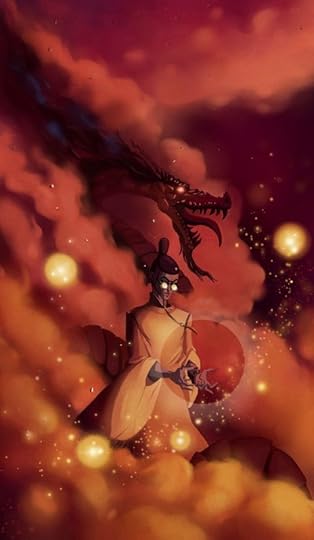
More details to follow very soon…
Please Feel Free to Share:







October 21, 2016
BristolCon 2016
I’m looking forward to taking part in BristolCon again this year!
October 29th 10. 00 a.m. in Programme Room 1
NOT JUST HOCUS POCUS
We all know the appeal of wand and incantation systems of magic in fantasy fiction, exemplified by Harry Potter (Wingardium Leviosa!) but what about more subtle and deeper kinds of magic, the kind you maybe can’t learn in Wizard School? We consider the forms such magic might take and has taken in literature:
Lucy Hounsom (M) Philip Purser-Hallard, Paul Cornell, Ellen Crosháin, Sarah Ash
I’ll also be talking about manga and anime at 3 p.m. in the Art Room:
‘Sleigh Beggies, Black Dogs and Knavish Sprites – Japanese manga and anime creators take inspiration from the folklore and legends of the United Kingdom.’
Please Feel Free to Share:







September 19, 2016
Cathedrals and Cages by Anne Nicholls
Why do we write? Why do we build cathedrals?
Why do we have wars?
If you stand within the glory of Gaudí’s cathedral you’re in a waterfall of light where the shadows play hide-and-seek. Typically we think about something bigger than ourselves. That may be beauty, or love, or pure thoughts that have nothing to do with a pound of sausages from Tesco’s. A cathedral reaches up to the highest point … of something.

Back in the olden days of caves and shadows in the night, light and togetherness meant safety. Nothing could sneak up on us. Anything that tried would be speared or fried with our cookfires. Belonging meant security.

But security meant toeing the line. Listening to Big Brother. He’s right, you’re wrong, bop. End of story. Over the centuries this translated as empires and invasions: the so-called Pax Romana, or Pax Britannica, or the reach of the Moghuls from Asia to India to China. And let’s not forget the First Nations of Africa and the Americas. A flowering of art and aspiration, which grew from the fertilisation of soil with blood.

But social cohesion is falling apart. Those of us who learn from history are doomed to stand by and watch while those who don’t, repeat its mistakes. Scotland and Wales want independence. So do several autonomous regions of Spain, and let’s not forget the Northern League who want to divide Italy into Rich Lombardy and Poor Everywhere Else. And where does that leave Manchester, Liverpool and Northumberland, which are so far north of Watford that Londoners think the yokels still wear woad?

Britons with short memories don’t think about how there hasn’t been a war within Europe for seventy years. We’re losing the cohesional pull of We’re all in this together. The Management want their way. A definite job with a definite income? Nah. If you’re less than middle management it’s a zero hours contract for you, my lad. Or lass. Right to bereavement leave? Sure, if you want to get the sack. Want a decent return on your life savings? Pity you’re not a banker.
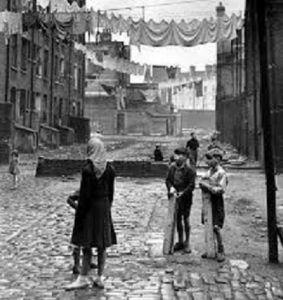
Can’t fit in with society around you? Build your own little cage. Write a book to inspire. To keep like-minded folks safe and cosy by their hearth. To belong – just not here.
Trouble is, more and more of us are building our own little cages. We have the highest ever rate of single-occupancy dwellings. Epidemics of isolation and suicide. Individual use of power places a greater demand on the planet than family, clan or tribal use. Sure, individualism is great – unless not getting tromped on = the sacrifice of social interconnection.

‘Aha!’ you say. ‘What about the interweb? Social media rule, don’t they? I connect to hundreds of people a day.’ But does a symbolic hug have the same validity as a physical one? Who would you rather have plaster your broken leg, a hands-on medic or some bodiless nurse talking you through it on the phone?

The bottom line is that we have to take what we can get. On the left of this equation is what we’re willing to act to invite into our lives. On the right is circumstance. Scylla meet Charybdis.

So in the end we each have to think what we are. Are you a person who builds or destroys? Do you add to cohesion or subtract from it? Do you side with the Eloi or the Morlochs?
Or do you accept that we don’t have to behead the tall poppies, just enjoy their added piquancy? That you can extend your caring to the people around you, and not just those of your chosen flavour? And to people you’ll never meet even over the wires? That our species doesn’t have to be only competitive, whatever back-stabbing politicians or greedy industrialists mandate?
In his political satire Candide Voltaire summed it up brilliantly: We must cultivate our garden. Literally, in the regreening of our planet. Culturally, in adding our personal warmth and inclusiveness to our communities.
And in the realms of the mind, through philosophy, literature, music and all the arts. We can paint in words, notes and pigments, a vision of how good the future could be if only we stopped behaving like bacteria.
Can you build a cathedral of light?
More to the point, will you?
Anne Nicholls began writing as Anne Gay. She changed the name after marrying author Stan Nicholls. Her first published SF work was the story Wishbone, which appeared in theGollanz/Sunday Times Anthology of SF Competition Stories. A slew of other stories was followed by her novel Mindsail. This ran to four editions and reached the Sunday Times best-sellers list just above Dick Francis. He was at #65 on the way down from #1, though. Other novels, The Brooch of Azure Midnight, Dancing on the Volcano and To Bathe in Lightning followed, receiving wonderful reviews including in the Daily Telegraph. Learn more about Anne Nicholls and see some of her art at her website https://annenichollswriter.wordpress....
Please Feel Free to Share:







September 18, 2016
The Guest Blog Returns!
I’m really thrilled to be welcoming Anne Nicholls to the Autumn Guest Blog this week!
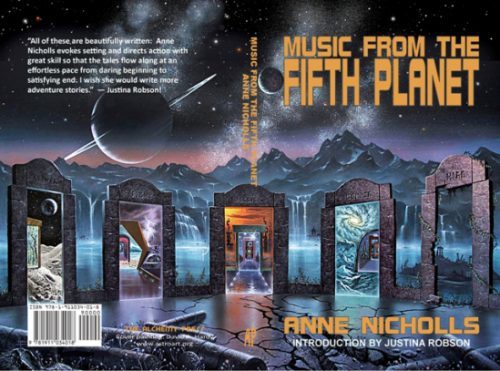
Anne delivers a thought-provoking post entitled ‘Cathedrals and Cages’. Drop by from Monday 19th September to read what Anne has to say.
July 15, 2016
Interview with A. J. Chaudhury
Every writer loves to be interviewed – and so I was delighted to be invited by young fantasy author A. J. Chaudhury to take part in an interview on his blog. You can read the interview here. My thanks to A.J. for featuring me; it’s always good to ‘meet’ another author starting out in the genre!
June 13, 2016
Mary Corran: Writing as a Private Art
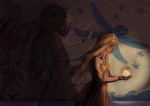
It’s a very great pleasure to welcome Mary Corran to the Guest Blog today; Mary and I were fellow SFF authors on the Orion Millennium list back in the day when it was new and I’m showcasing some of the gorgeous original covers as well as her currrent (also gorgeous) ebook covers.
No One Knew She Was There
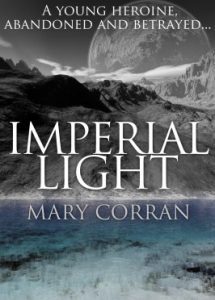
Mary Corran
When I was doing my MA in Women’s Studies, I was criticised for not writing from personal experience; it was much easier to globalise. Thus I start here as an active and ardent feminist, of my own definition, and atheist. I don’t know about the experience of male writers, and if it differs from that of women. Perhaps such a difference might be defined by the size of respective egos, but that is probably more personal than gendered. After working as a stockbroker in the City for ten years, some of my thoughts are unprintable. Some of the old brigade simply couldn’t cope with female colleagues; their brains seemed unable to encompass a woman in a position of authority (intellectually speaking, at any rate).
During my MA studies, we dwelt a lot on the Victorian era and the legal invisibility of women after marriage. At 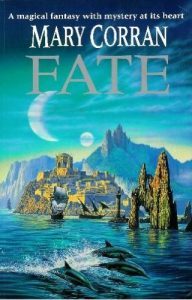 the same time, however, there were many successful women writers – such as Sarah Grand and Elizabeth Gaskell, who claimed to have earned more from her work from her work than Dickens. Yet it is hard not to think about the Brontes, with their male pseudonyms, nor to ignore that fact that even today, women writers may be advised to use only initials, to disguise the fact that they are women. Boys and men, we are told, are less willing to read books attributed to female authorship. Even JK Rowling was so advised. In response, I admit that I tend to concentrate on books written by women. Some male writers, of course, pass the test, and my nephew has once or twice accused me of misandry.
the same time, however, there were many successful women writers – such as Sarah Grand and Elizabeth Gaskell, who claimed to have earned more from her work from her work than Dickens. Yet it is hard not to think about the Brontes, with their male pseudonyms, nor to ignore that fact that even today, women writers may be advised to use only initials, to disguise the fact that they are women. Boys and men, we are told, are less willing to read books attributed to female authorship. Even JK Rowling was so advised. In response, I admit that I tend to concentrate on books written by women. Some male writers, of course, pass the test, and my nephew has once or twice accused me of misandry.
I cannot speak for women as a whole, but I know I do have a tendency towards desiring invisibility. For me, writing is a very private event. I don’t like people even looking at me as I write. I fear it comes with a primitive suspicion that my mind can be read, and thought must be hidden at all cost. I was very grateful at Oxford to have tutorials almost always alone, so that I could read my essays to only one audience.
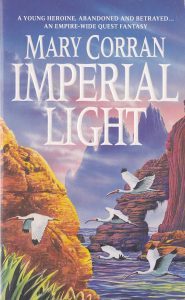 I don’t think that this is an inherited fear. Women in my family were strong, intellectual and efficient. At the same time, however, they were curiously male-centred. My mother, an Aegean archaeologist, who obtained the best first in her year at Cambridge, had suffered from paternal neglect. Her father, a renowned Orientalist, valued his son (a surgeon), but not his daughter. He believed, I am told, that two women in conversation were a conspiracy. I learned, during my determination to interest my mother in my MA, that she had essentially thought of herself as a man in respect of her work. Yet my sister and I grew up certain that women could do anything – climb mountains, travel all over the world, walk alone through Greece in the 1930s, chop wood. It wasn’t that there were limitations on what women could do, but on what the world seemed willing to believe they could do.
I don’t think that this is an inherited fear. Women in my family were strong, intellectual and efficient. At the same time, however, they were curiously male-centred. My mother, an Aegean archaeologist, who obtained the best first in her year at Cambridge, had suffered from paternal neglect. Her father, a renowned Orientalist, valued his son (a surgeon), but not his daughter. He believed, I am told, that two women in conversation were a conspiracy. I learned, during my determination to interest my mother in my MA, that she had essentially thought of herself as a man in respect of her work. Yet my sister and I grew up certain that women could do anything – climb mountains, travel all over the world, walk alone through Greece in the 1930s, chop wood. It wasn’t that there were limitations on what women could do, but on what the world seemed willing to believe they could do.
My sister and I were partially invisible in our household, in our growing years. My mother believed my father’s work should not be disrupted by two children. We grew up knowing we were not of the first importance. I am not, nor was not, bitter about this, yet it did create wide spaces between the generations and understanding of each other. I always wanted to write, and I read, with real envy, of Rumer Godden’s experience, where her family had her tutored to aid her future career. I never told anyone I wanted to write fiction. Academic writing was what mattered. I remember my mother saying that it was incredibly cruel to refuse to tell a scholar they were dying of cancer, because it meant that their work might not be completed before their death. Work was more important than relationships.
Growing up meant learning to define myself by other than family ties: to be only me, not anyone’s daughter or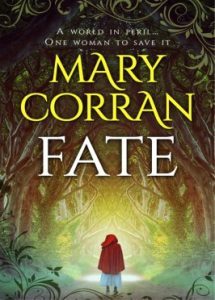 sister or friend, and to try and value that self. This was allied to a common insecurity: I didn’t want people to look at me. The words Photo and Mary, in the same sentence, invariably produced the comment ‘such a pity you always look so plain in photographs’. My brains were valued, as the life of the mind was in our household. This is a long way round of saying that when I married I adopted my husband’s surname, because it meant that – when I was at Oxford – few people knew who I was, except Mary Corran. I kept that name after our divorce because it was my working name. I thought of changing it to something else – my birth name was Mary Waterhouse – but none of my friends agreed with my choices! I am Mary, but the rest doesn’t matter.
sister or friend, and to try and value that self. This was allied to a common insecurity: I didn’t want people to look at me. The words Photo and Mary, in the same sentence, invariably produced the comment ‘such a pity you always look so plain in photographs’. My brains were valued, as the life of the mind was in our household. This is a long way round of saying that when I married I adopted my husband’s surname, because it meant that – when I was at Oxford – few people knew who I was, except Mary Corran. I kept that name after our divorce because it was my working name. I thought of changing it to something else – my birth name was Mary Waterhouse – but none of my friends agreed with my choices! I am Mary, but the rest doesn’t matter.
When I worked in the City, I enjoyed writing research, and we had a great deal of leeway in how and what we wrote. Yet I saw the time was coming when I had to take the plunge and attempt fiction. I was lucky in that I was awarded a contract and went on to publish my first book, Imperial Light. To my surprise, my niece and mother loved it.
The ecstasy from receiving my first book contract lasted, but not very long. I had problems with an editor who felt my heroine/s weren’t strong enough. I wanted to write about women who achieved wonderful things without becoming surrogate men. My favourite fantasy writers at the time were Andre Norton – and what a wonderfully ambiguous name – and Marian Zimmer Bradley, whose books explored women’s relationships and sexuality in work far removed from that of Robert Heinlein. I think you have to believe you have something to say in your novels as well as a story to tell. It can be a discussion, in the book or with the reader. That, too, is a form of conflict.
Publication of your work is both all that is desired, but dangerous. Writing is a private art, but when published it enters the public sphere. Suddenly, you, personally, become visible. I have read books written by people I know well, and think I can see where thoughts originated. But I could easily be wrong. And once published, you come under personal scrutiny. Anyone is free to read your book and comment on its quality, content – anything at all. You have no right to refute what you may feel to be misunderstanding, or any other form of criticism. But writers must expect criticism. We have it all along the process, from agent and editor to reviews.
You need to have confidence in your work, and I think that means in the subject you discuss as well as the story. And you need to develop that confidence in the absence of friends or family. Rejection is painful. I found courage in the examples of Minette Walters, and JK Rowling, both rejected many times by publishers, but who carried on until the quality of their work was recognised.
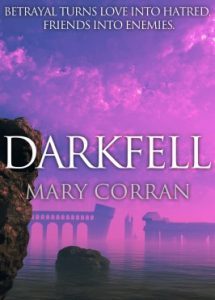 Others have said that editors have no problem with women writers, and I am sure that is true. Yet if you look at the lists of top sellers in areas such as thrillers and spy novels, as well as in SF and Fantasy, male writers do seem to rate higher. I have always wondered whether this is because of our odd value system. Violence sells (especially serial killers, or alien wars). Lord of the Rings, of course, is ideal. Almost no women, and a lot of blood and guts and brute force. Thus courage, as some define it. Of course there are plenty of women writers capable of producing quite as much terror and mayhem. I, however, am not of this ilk. I am more interested in other kinds of conflict. In Darkfell, I wanted to deal with temptation, how it begins, and when and if it can be resisted. At what stage is it possible to call a halt? Fate was in part about the question of predestination and free will. Of course, you want a good story with the themes, and good and evil are inherent in all tales. But is this enough? What if people think a book without lots of physical conflict is boring?
Others have said that editors have no problem with women writers, and I am sure that is true. Yet if you look at the lists of top sellers in areas such as thrillers and spy novels, as well as in SF and Fantasy, male writers do seem to rate higher. I have always wondered whether this is because of our odd value system. Violence sells (especially serial killers, or alien wars). Lord of the Rings, of course, is ideal. Almost no women, and a lot of blood and guts and brute force. Thus courage, as some define it. Of course there are plenty of women writers capable of producing quite as much terror and mayhem. I, however, am not of this ilk. I am more interested in other kinds of conflict. In Darkfell, I wanted to deal with temptation, how it begins, and when and if it can be resisted. At what stage is it possible to call a halt? Fate was in part about the question of predestination and free will. Of course, you want a good story with the themes, and good and evil are inherent in all tales. But is this enough? What if people think a book without lots of physical conflict is boring?
And this returns to the subject of invisibility, and how others consider your own value system. Once your book is out there, you will probably be hurt. Not everyone will like your book, or you. They will not know you, but that is unimportant. People make assumptions about you through your writing. Well, we allow ourselves the privilege of valuing other works. But words do hurt . And I am afraid, at times, of being out there, waiting for someone to throw the first rotten tomato. I prefer to be unseen. But that doesn’t sell books…
I was writing my fourth book. Fortune, when I finally succumbed to a mental breakdown. They suggest creative people are more prone to mental illness, and the population of the psychiatric wards could serve as evidence. Everyone has a story. I cracked up for many reasons, not least of which was feeling without value. My work meant nothing to me. I starved myself because I thought then that my small size would give people a lesser target for attack. I wanted to hide from everyone, and escape.
It’s a pity that the breakdown didn’t take another year. Fortune dealt with a colony of refugees, from many different countries and cultures, and I wanted to explore how they coped with all each other’s ideas and values. Yes, with a view to mocking some, I admit. I haven’t the courage to return to the third I had written.
But my ire, at present, is not about being almost invisible as a writer (surely mostly my own fault), but a much more global question of human values. I shouldn’t be surprised that my own questions don’t seem relevant in a world where football rules a huge percentage of the daily news, and where companies are being encouraged to make it easier for fans to watch their own matches in this coming conflict. And I recall one reviewer said, of Fate , that surely (in 1995), there was no need for this outdated feminism. This, when the imbalance of women in the world, in numbers and in poverty far outclassing men, has grown, not shrunk.
No, this is not the world for me, I think. I cannot reconcile what I see to what I am shown daily on all media. I am unseen by it, and that is the way I prefer it at present. Feminists always said that the personal was political. I reserve my strength for what I can affect. I live with two cats. I try to help with local issues, and I wrote Wasteland to see if my own experiences of mental illness could be of use to other sufferers and medical persons. That took courage, for me. And I’m glad I did it, even if it makes readers devalue me, as only a shadow of once I was.
